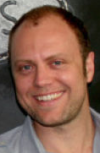How bosses can build trust by baring themselves to staff
 In this guest post, Simon Rutherford, CEO of Slingshot Media, argues that bosses should be vulnerable in front of their staff.
In this guest post, Simon Rutherford, CEO of Slingshot Media, argues that bosses should be vulnerable in front of their staff.
Winston Churchill once said: “Courage is what it takes to stand up and speak; courage is also what it takes to sit down and listen.”
Often in business our leaders are good at standing up to fear but fail to acknowledge we also need to listen. Listening doesn’t mean just hearing the words, it means listening with all of our senses. Also, it often means we don’t necessarily need to solve everything. Sometimes our staff just needs us to be a sounding board; in verbalising their problems, they will often solve them by themselves, leaving them feeling more empowered (versus us showing how smart we are by solving the problem for them).
As a follow up to my previous piece previous piece on staff wellness, Iwanted to express my thoughts on building a foundation for trust with your staff through courageous leadership.


Well written Simon. 85% of managers admit that there are issues they see at work which they are afraid to talk about. In my work around decision-making, I also find trust and honesty as a key plank of organisations being able to make great decisions, and then execute change.
Love this piece and the starting quote from Churchill. It is so important for leaders to move away from the idea that they have to be infallable. Vulnerability is a key trait for building trust whether we are talking our professional life or personal life.
I also agree with the premise that listening is crucial. You never learn anything new when you are doing the talking!
Great think piece Simon
Truly a long overdue and relevant piece. Humanity can be the underpinning of all successful businesses.